21 Companion Plants for Peonies (With Pictures)
-
Pete Ortiz
- Last updated:

Peonies are elegant and beautiful flowers that bring joy to the gardener and the garden. They are hardy in Zone 3 and grow well in Zones 7 and 8. In most parts of the USA, the rule of thumb for successfully growing Peonies is full sun and well-draining soil.
They are so simple to grow with other plants to create a lovely array of blossoms all season long, and planning your landscape is easy when you know what companion plants go well with them. When choosing companion plants for your peonies and designing your garden, consider the plants’ flowering time and color, foliage texture and color, and height. Here are some companion plant ideas to help you design your landscape to include Peonies.
The 21 Great Companion Plants for Peonies
1. Alliums

| USDA Hardiness Region | 3–9 |
| Sun | Full sun to partial shade |
| Soil | Well-draining soil |
Alliums bloom in late spring or early summer, before peonies, so it works well to plant them among the peonies. They will grow upward and sprout a flower with a large circular head made of small, densely packed flowers that are usually white, pink, or yellow, depending on the variety.
As soon as the flower blooms, the foliage dies, leaving the plant bare, so planting them among Peonies can help mask the unsightly yellow foliage. There are alliums for every garden, large or small, in various colors, heights, and sizes.
2. Roses
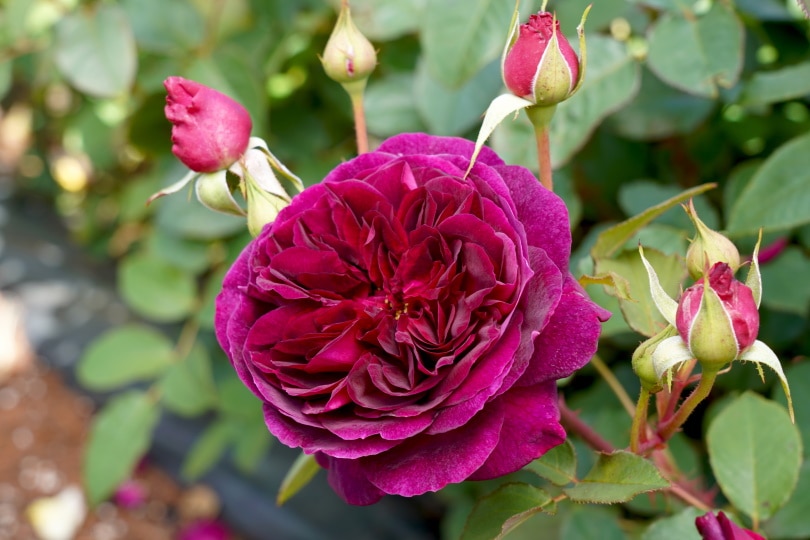
| USDA Hardiness Region | 5–10 |
| Sun | 6–8 hours of sun each day |
| Soil | Well-draining, but holds moisture |
Roses are undeniably one of the most beautiful and popular flowers, and although they can be finicky and need more attention, they are a gardener’s favorite. Almost all garden roses bloom after peonies and thrive in the same conditions, so planting them together will result in blooming for a longer period.
Roses are also gorgeous cut flowers and are stunning enough as the main feature in a bridal bouquet or a table centerpiece. Roses have a popular and romantic fragrance that can be used in soaps, oils, and lotions.
3. Foxgloves

| USDA Hardiness Region | 4–10 |
| Sun | Full sun to partial shade |
| Soil | Well-draining soil |
Foxgloves are tall, cone-shaped flowers that make a statement in a garden. Clusters of tubular flowers make up the tall cone shape and can be pink, yellow, white, lavender, or purple. While they make an excellent companion for peonies, they enjoy their own space, so as a companion in your garden, ensure you have enough space to leave a few inches between them.
Although these flowers are a stunning addition to any landscape, if you have children or pets, you need to plant them cautiously, as all parts of this flower are toxic if consumed.
4. Clematis
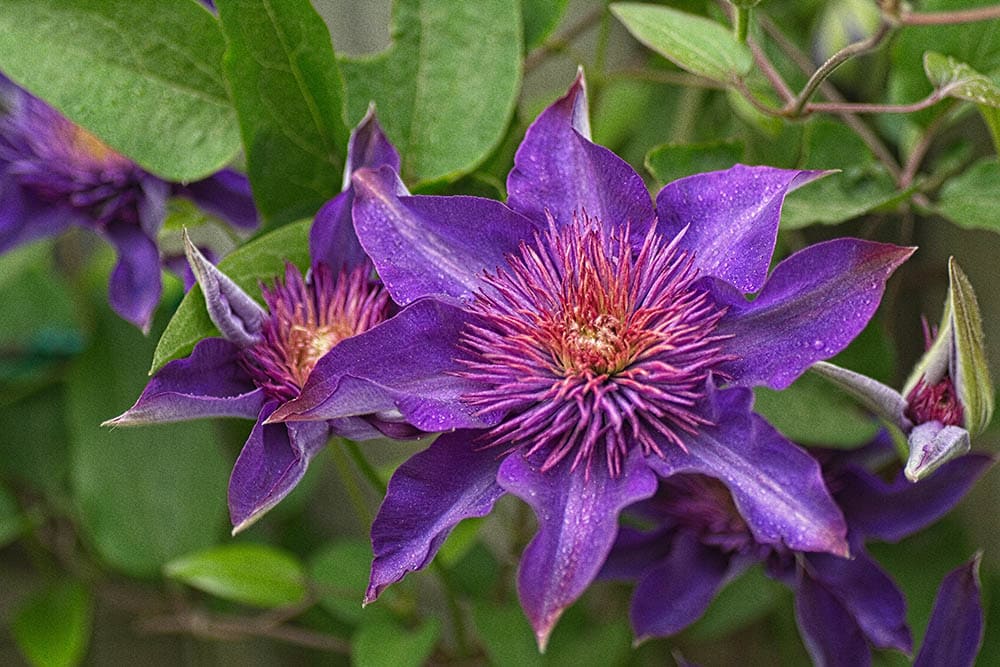
| USDA Hardiness Region | 3–9 |
| Sun | Full sun to partial shade |
| Soil | Moist, well-draining soil |
Clematis is a fantastic perennial vine that will adorn any structure it grows on with its flowers in various colors and forms. Clematis provides a beautiful green backdrop of foliage growing along a trellis or fence when planted behind some Peonies. Its foliage will shade the clematis’ base, keeping it healthy during the hottest days of summer.
Clematis comes in various colors and blooms at different times of the year. When choosing a clematis for your garden, you should consider several factors, including mature height, flower form, and color.
5. Hydrangea
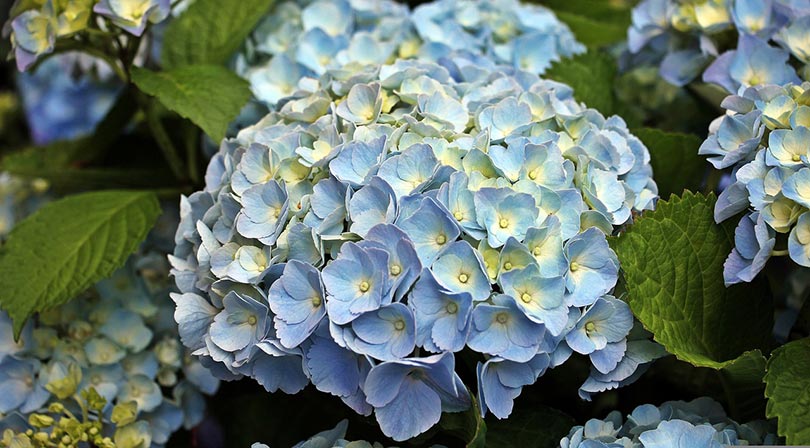
| USDA Hardiness Region | 3–8 |
| Sun | Morning sun with partial shade in afternoons |
| Soil | Moist, fertile, well-draining soil |
Hydrangea flowers are genuinely stunning if you’re looking for an alluring garden flower. This shrub is covered in large bulbs of flowers in the summer and spring, grows quickly, and can fill a space in just one summer, reaching up to 15 feet in height.
Hydrangea flowers can be the foundation plant of your garden design and alongside peonies for a beautiful pastel landscape, with flowers starting in spring and often lasting into early fall.
6. Alyssum
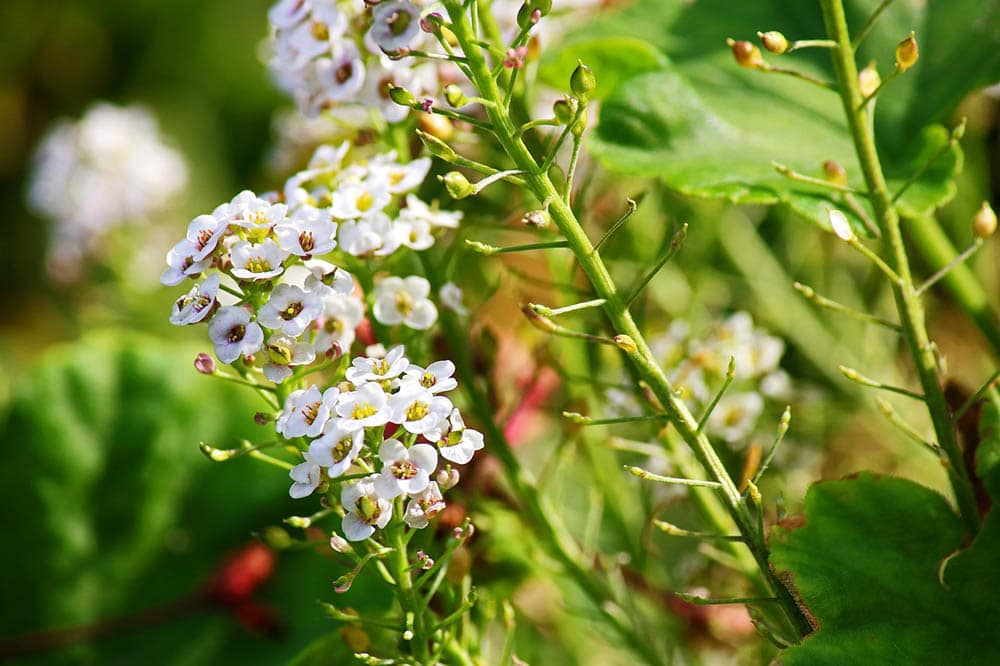
| USDA Hardiness Region | 3–7 |
| Sun | Full sun |
| Soil | Moist, well-draining soil |
Alyssum produces a vibrant carpet of tiny flowers that can be used to cover your garden or landscape. They spread to form a living mulch beneath taller plants and make excellent draping plants for hanging baskets and containers.
Alyssums work great when planted under large peony plants with their stately blossoms, and the scent of certain peonies combined with the floral scent of sweet alyssum is simply divine.
7. Columbine
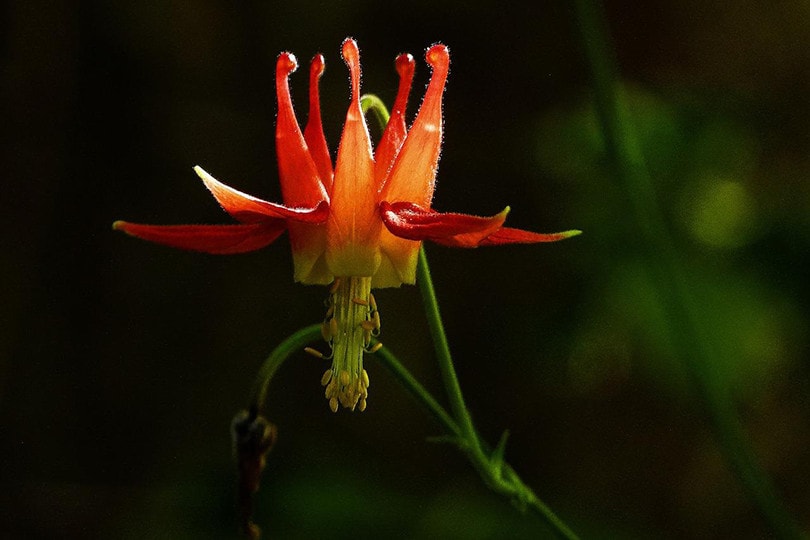
| USDA Hardiness Region | 3–8 |
| Sun | Partial sun to light shade |
| Soil | Well-draining humus soil |
Columbines are a low-maintenance perennial that provides seasonal interest throughout most of the year. They bloom around the same time as Peonies in the spring, and if you like an emersion of colors and textures, adding flowers that wander and fill spaces is ideal.
Columbine is a garden flower that self-seeds and spreads and has an ethereal appeal that contrasts nicely with peonies. Because there are so many varieties of columbine, compare the expected flowering height to the flowering height of your peonies. Hummingbirds and pollinating insects will also be drawn to this lovely flower if planted alongside your peonies.
8. Lavender
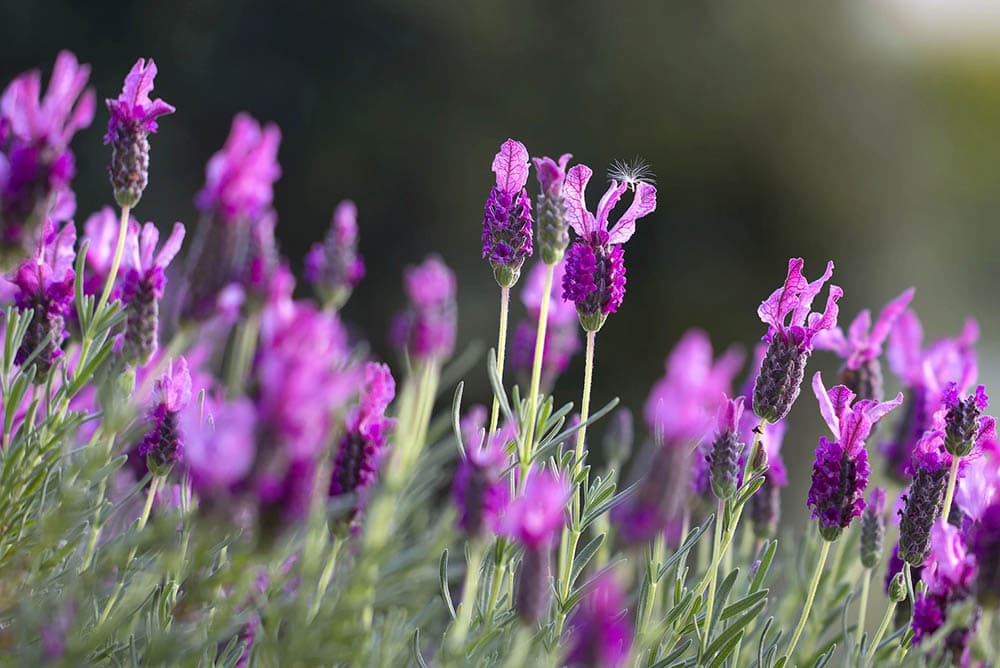
| USDA Hardiness Region | 5–9 |
| Sun | Full Sun |
| Soil | Sandy, well-draining soil |
Gardeners love lavender for its dainty purple flowers and fragrance. Lavender is ideal for creating garden bed borders with its silvery-green foliage and vertical flower plumes. Smaller varieties can be planted in front of peonies to form a hedge, while taller varieties can be planted behind or among peonies, making them great companions.
Lavender is also popular for making fragrant flower arrangements, potpourri, and aromatic sachets.
9. Lupins
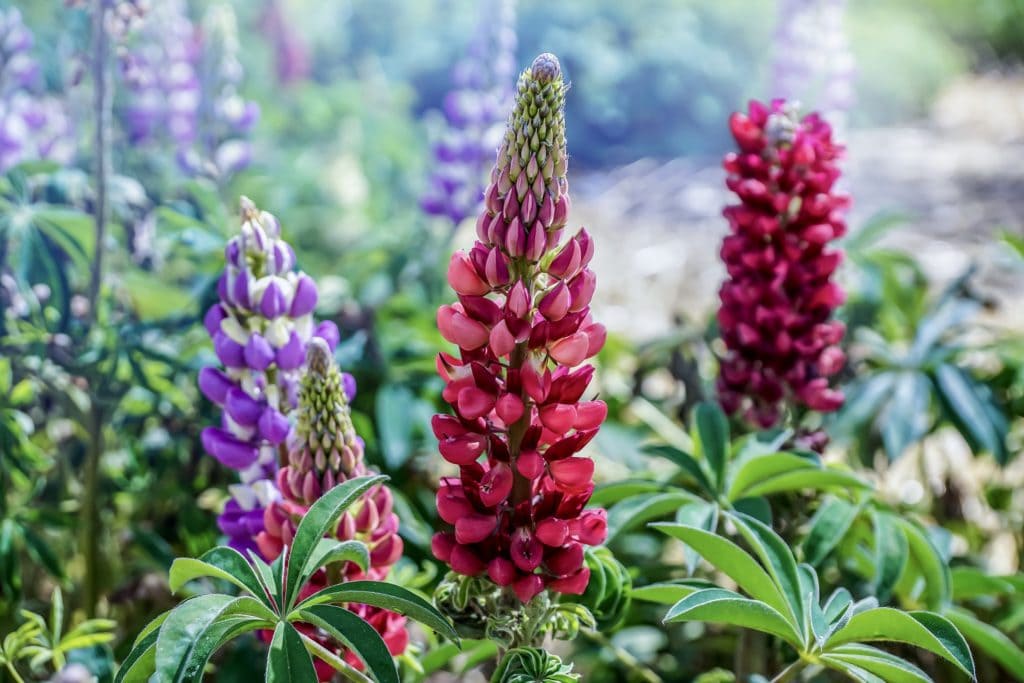
| USDA Hardiness Region | 4–8 |
| Sun | Full sun |
| Soil | Well-draining soil |
Lupins are plants with beautiful flowers that attract pollinators and pull nitrogen from the air and into the soil, making this essential nutrient available to nearby plants. The tall perennial flowers of the lupin are impressive and will appear just before the peonies open. Lupins are typically pink, purple, or cream in color, making it easy to match the color scheme of your peonies.
Lupins are taller than peonies and are usually planted behind them in a garden.
10. Echinacea
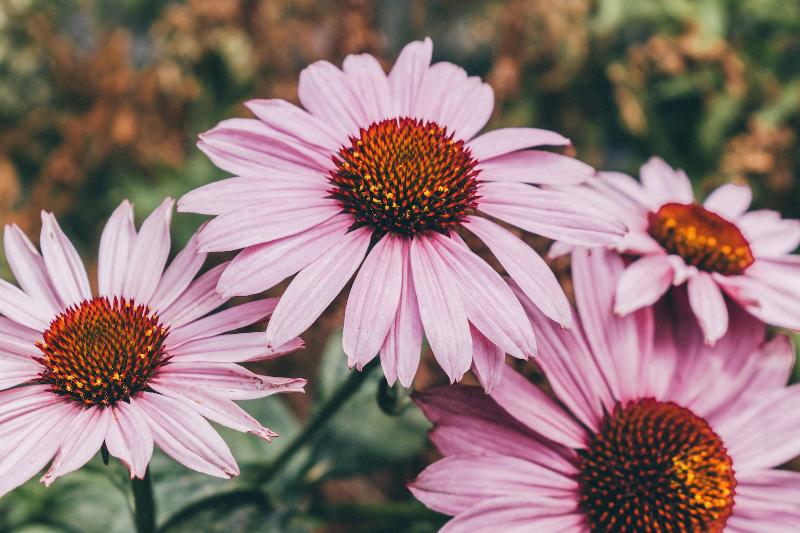
| USDA Hardiness Region | 3–9 |
| Sun | Full sun |
| Soil | Sandy, well-draining soil |
Echinacea, also known as coneflowers, are herbaceous perennials with numerous medicinal applications. When peonies are ready to bloom, Echinacea is just a simple green plant that provides a basic background, but when the peony show has faded, the big daisy-like blooms of the Echinacea offer a beautiful display.
They are stunning and add color later in the season, making them an excellent companion for peonies. The raised cone-like center of Echinacea contains seeds that attract butterflies, and if the head is left after they have bloomed, they will attract songbirds to your garden.
11. Bearded Irises

| USDA Hardiness Region | 8–11 |
| Sun | Full sun |
| Soil | Well-draining soil |
Bearded Irises are one of the simplest perennials to grow in your garden and are an excellent companion to peonies. Some re-bloom, putting on a colorful display in the garden twice in the same season, and after the flowers have bloomed and the iris stems have been pruned, the leaves contrast beautifully with the foliage of the peonies.
It’s important to know that these beautiful flowers are toxic to dogs and cats, so they may not be ideal if you have fur babies.
12. Siberian Irises

| USDA Hardiness Region | 3–8 |
| Sun | Full sun to partial shade |
| Soil | Moist, well-draining soil |
The Siberian Iris has long-lasting flowers and requires little care other than regular watering, making them a great companion for peonies. This variety is frequently streaked with complementary colors, giving it a particularly graceful and beautiful appearance. The leaves are attractive long after the flowers have disappeared, with a texture similar to that of ornamental grass.
13. Bleeding Heart
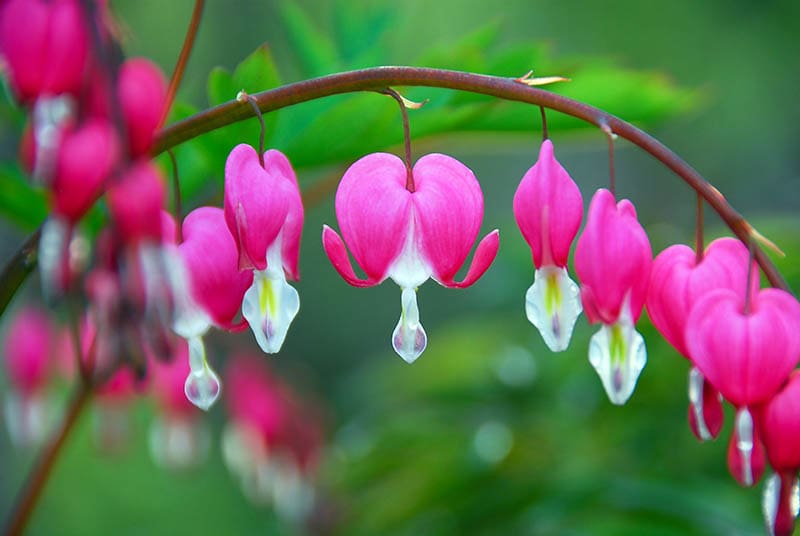
| USDA Hardiness Region | 3–9 |
| Sun | Full sun to light shade |
| Soil | Humus-rich, moist, well-draining soil |
The Bleeding Heart is an enchanting flower. It has pink, heart-shaped petals that dangle from long, slim stems, which make its name so fitting. They are great companions for peonies but toxic to humans and animals. Once the bleeding-heart flower has made its awe-inspiring presence, it will die off, but the roots will stay alive to bring it back the following year.
14. Daylily

| USDA Hardiness Region | 3–9 |
| Sun | Full sun |
| Soil | Well-draining soil |
Daylilies are popular, low-maintenance, hardy, long-lived plants and can thrive with little care. Though individual blooms only last a day, they bloom abundantly, and there are thousands of varieties. Daylilies usually bloom just after peonies, so their stunning flowers can replace the beauty and color in your garden when your peonies have faded.
Several colors are available, but the soft pink variety will look great with peonies. Their foliage is also grass-like, which makes them great borders for a garden bed, adding a delicate texture.
15. Daffodils
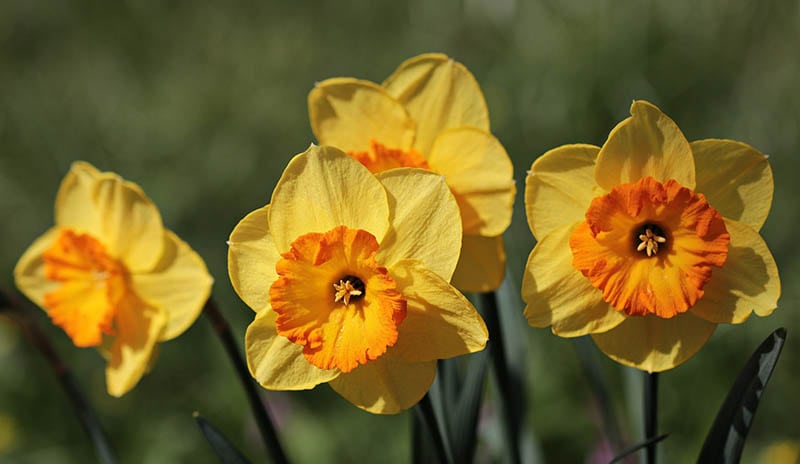
| USDA Hardiness Region | 3–8 |
| Sun | 6 hours of full sun a day |
| Soil | Moist soil with excellent drainage |
Daffodils don’t require much care and can thrive just with the sun and rain. They are vibrant, tall flowers when in bloom and have a unique, trumpet-shaped, double-petal arrangement.
Their bright yellow hue adds a pop of color to any garden and pairs well with peonies. While these blooms add awe to any garden and will look gorgeous among peonies, they are toxic to humans and pets.
16. Creeping Jenny
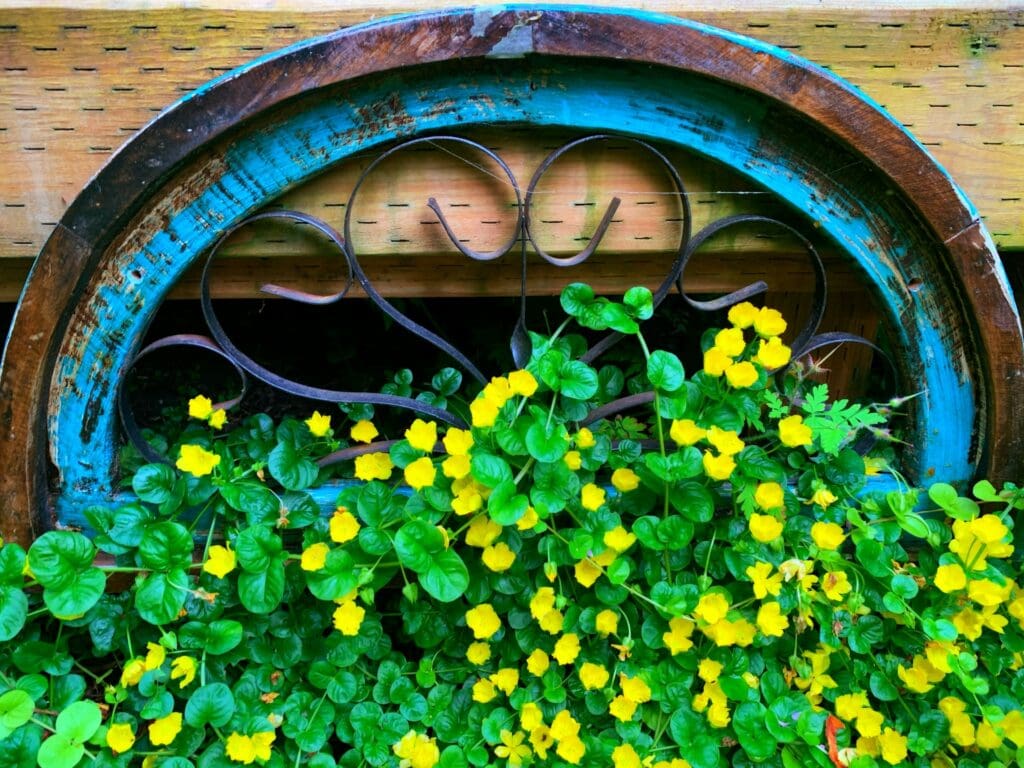
| USDA Hardiness Region | 3–9 |
| Sun | Full sun to partial shade |
| Soil | Nutrient-rich, loamy soil |
Creeping Jenny is an intense creeper with small, bright yellow flowers. It is a natural garden mulch, keeping moisture in and weeds out. The flowers don’t last long, but the greenery on its own looks good and can add a layer of green to the base of your peonies.
Though it can quickly take over a large portion of your garden, this fast-growing plant is also extremely easy to grow and softens any hard edges wherever it is planted. It can be borderline invasive, in which case you can grow it in a hanging basket and allow it to drape and spill over near your peonies.
17. Hosta
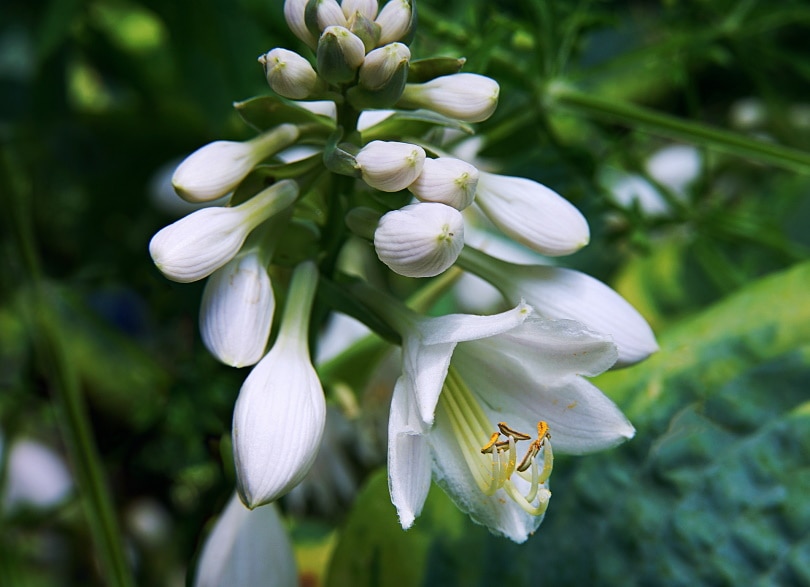
| USDA Hardiness Region | 3–9 |
| Sun | Partial sun to partial shade |
| Soil | Fertile, well-draining soil |
Hostas are typically known as shade-loving plants, whereas peonies love the sun, but they can meet in the middle and thrive well together in your garden. Hostas can withstand some sun exposure, so planting them together in a location with partial sun will be ideal.
If you want your landscape adorned with multiple blooms, a peony will bloom in the late spring/early summer, and a Hosta will shoot up stalks of lavender flowers in the mid/late summer.
18. Geraniums

| USDA Hardiness Region | 3–9 |
| Sun | Full sun |
| Soil | Well-draining |
Geraniums are one of the most varied flower families. They come in various shapes, sizes, and colors, and they can fit into any garden. Their requirements are the same as peonies, making them ideal companions. They are popular for garden beds but can also grow indoors or in baskets. Geraniums are simple to grow if you give them what they need.
19. Painted Daisy

| USDA Hardiness Region | 3–7 |
| Sun | Full sun |
| Soil | Rich, well-draining soil |
The painted daisy is a perennial flowering plant that provides weeks of bright color in your landscape. Peonies and painted daisies bloom at the same time and are roughly the same size, if not slightly smaller. The simple flower structure is complemented nicely with a peony’s more delicate layers and pleats.
Butterflies adore painted daisies, and although they also make excellent cut flower arrangements, the sap can be toxic to humans and pets.
20. Pansy
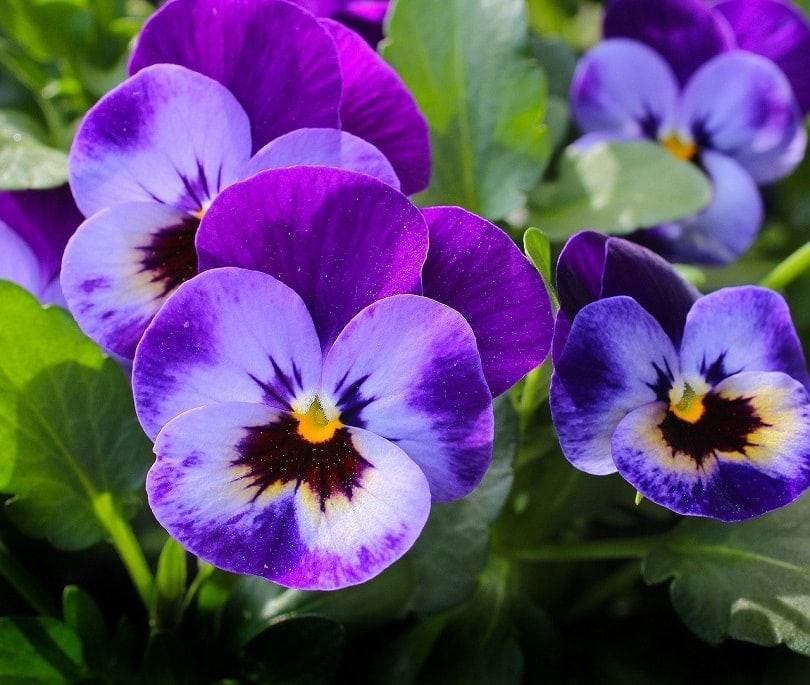
| USDA Hardiness Region | 7–10 |
| Sun | Partial sun |
| Soil | Well-draining soil |
Pansies are well-known garden flowers with heart-shaped petals in bright colors, often with bright, face-like markings in the center. Pansies and peonies both prefer cool environments and a cool spring garden.
Their flat flowers contrast beautifully with the large frilly peony flowers. They’re also edible and can be used to add color to salads, drinks, and cakes. They are a go-to flower when your garden needs some color and are great for containers, borders, and ground cover.
21. Azalea
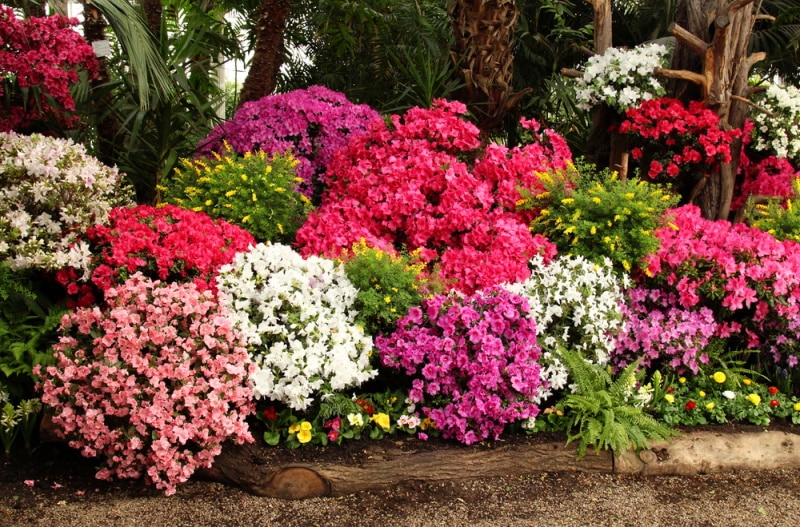
| USDA Hardiness Region | 6–9 |
| Sun | Partial shade |
| Soil | Well-draining, acidic soil |
Azaleas are easy to care for and can be grown in almost any garden. When Azaleas are grouped together, they form beautiful colorful shrub-like blooms that look great with some tall, fluffy peonies blooming behind them. The color range is magnificent, ranging from white to pale pink to various reds and purples. Their thick leaves can be evergreen, making for ornamental foliage after the peonies and azalea flowers have faded.
Worst Companion Plants for Peonies
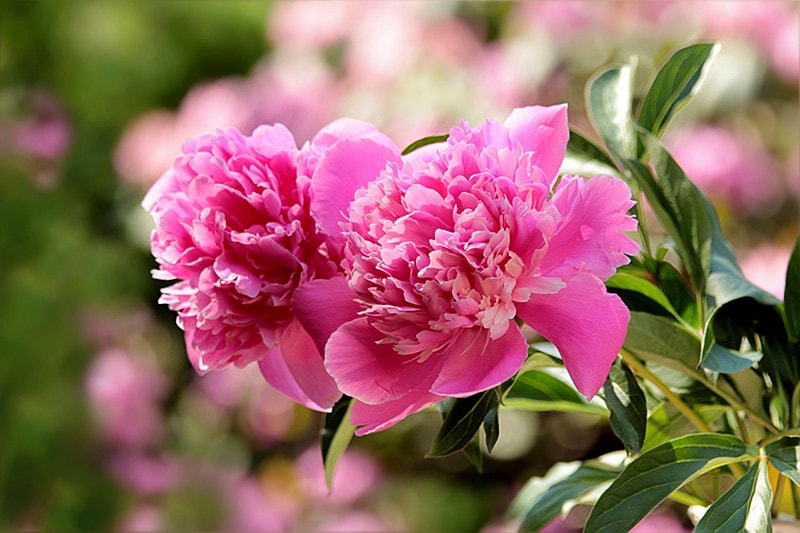
Peonies are sun-loving queens, so planting shade-loving plants such as spiderwort, Epimedium, ferns, toad lilies, ground orchids, and trilliums with your peonies won’t make great companions since they will be thirsty for shade. In contrast, your peonies bask and thrive in the sun. Some shade-loving plants can tolerate a bit of sun, but you must check before planting them with your peonies.
Peonies thrive in soil with a pH of 6.5 to 7.0, so plants such as pin oaks, gardenias, rhododendrons, and blueberries cannot share the same earth as they thrive in very acidic soil.
Peonies also need well-draining soil, so they can’t be planted with plants such as Irises, elephant ears, swamp sunflowers, scarlet swamp hibiscus, and many ferns that enjoy wet feet. Peonies won’t tolerate the same amount of water.
Conclusion
A peony is lovely on its own, but it only blooms for a few weeks, so finding plants that can take its place to keep the color and beauty alive is a great way to design your landscape. Plants with evergreen or attractive foliage also make great companions to blooming peonies.
Groundcovers or creepers can add interest to the base of your peonies, and short, shrubby plants can be used to create borders. A harmonious garden is created by planting flowers and shrubs that complement each other, and your peonies can stand out alongside an array of beautiful plants.
Featured Image Credit: Nicole, Pixabay
Contents


